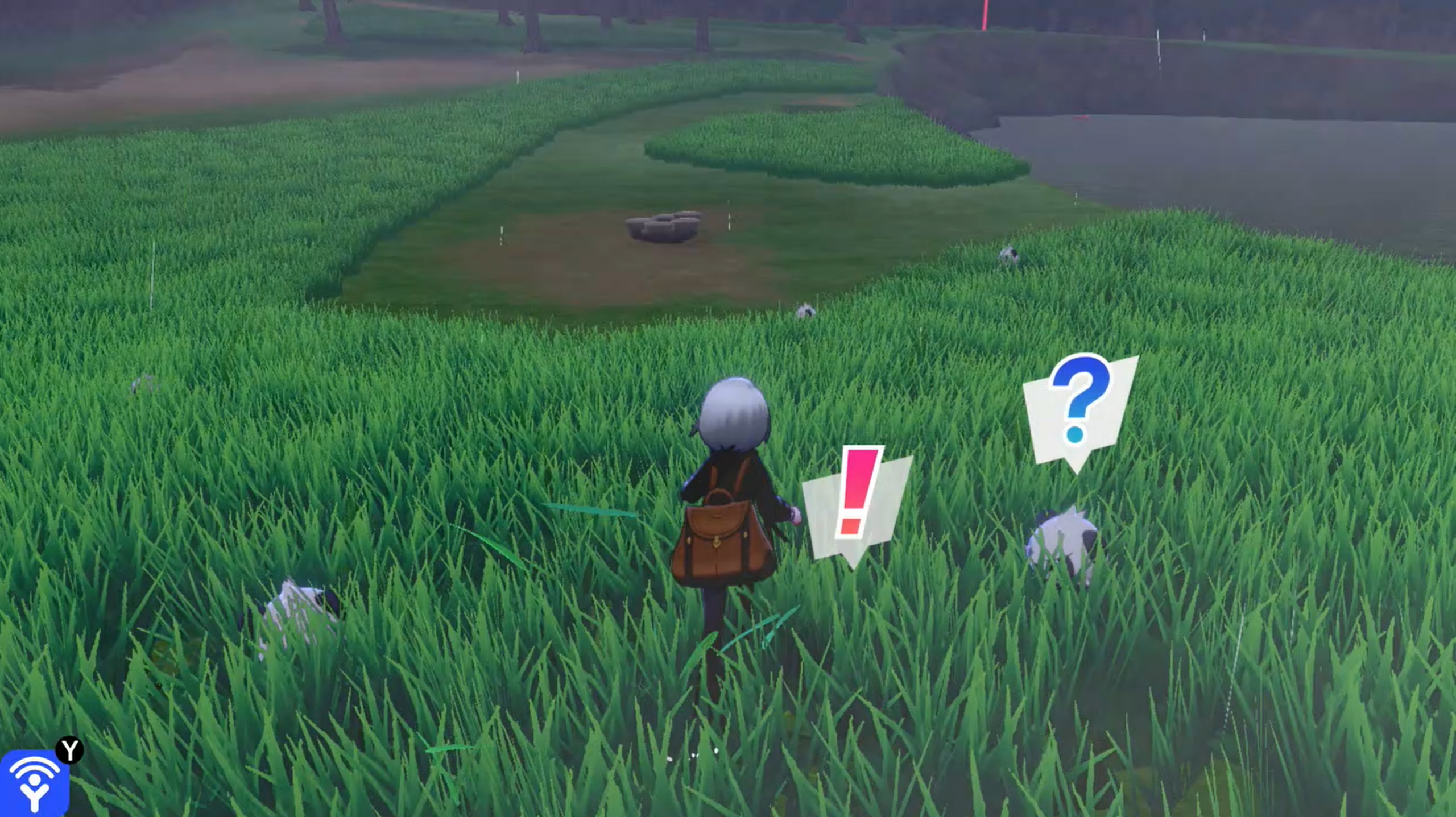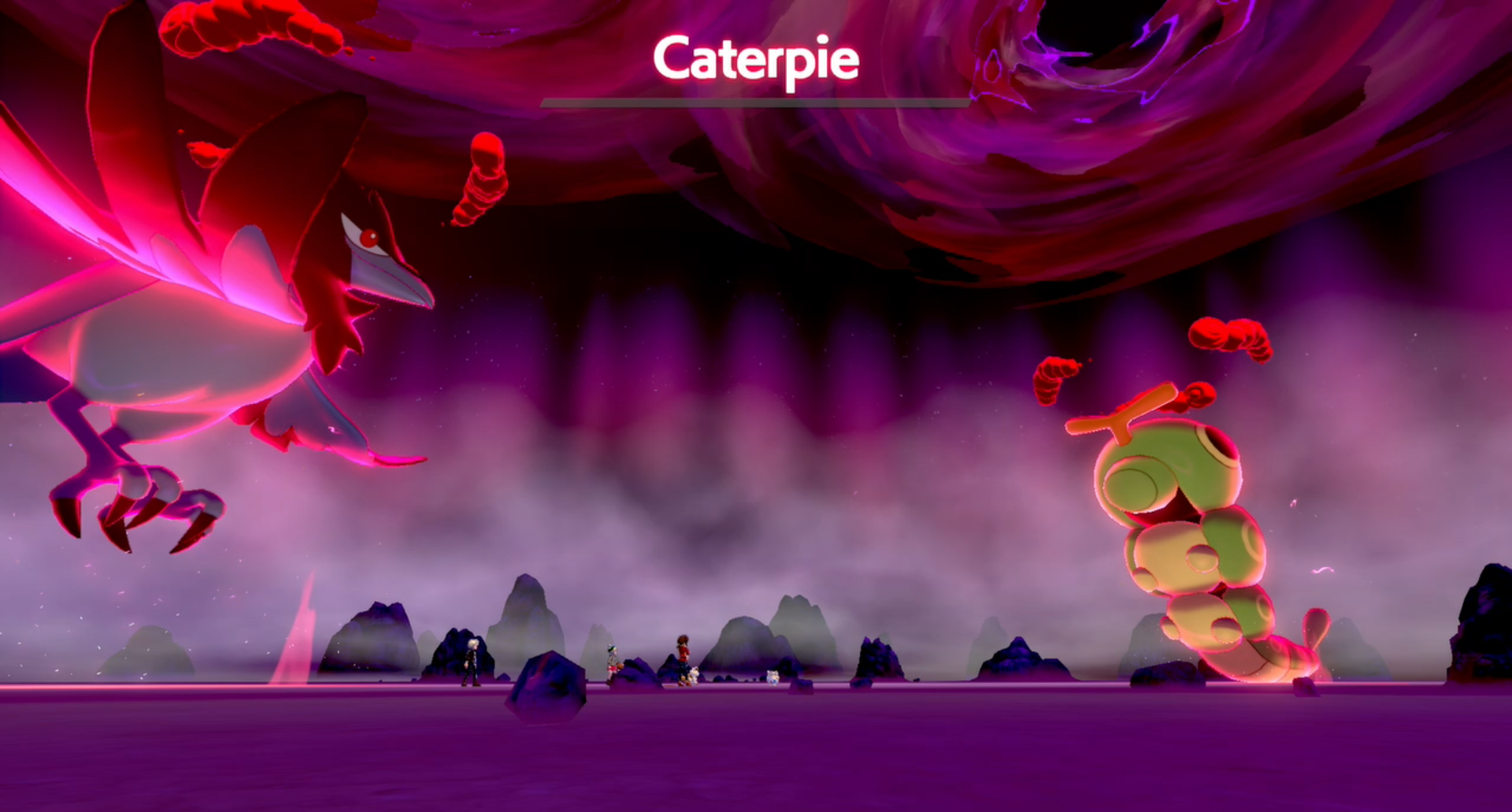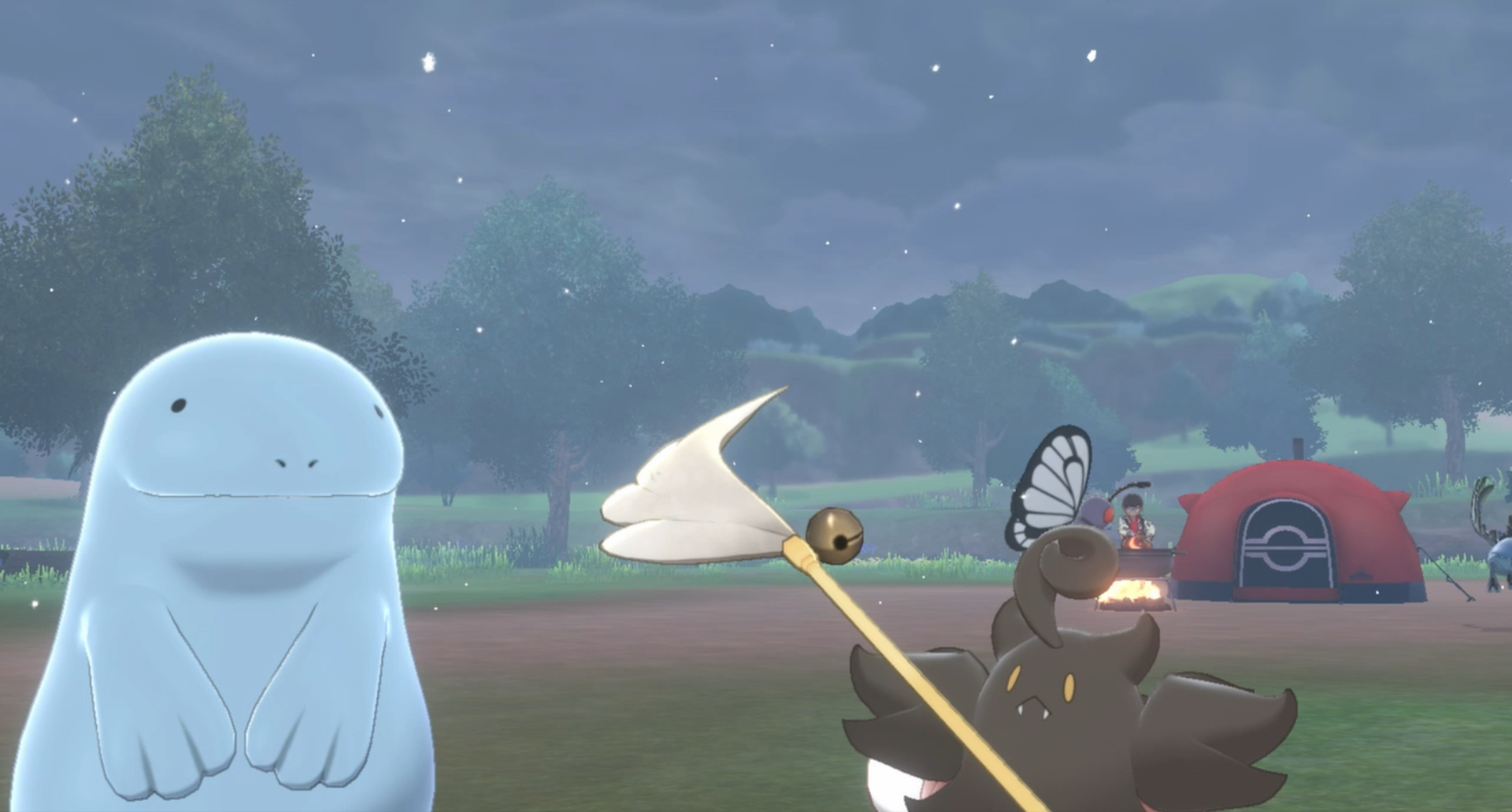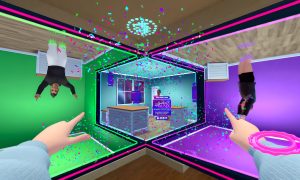Pokémon Sword and Pokémon Shield walk a fascinating line between old and new, drudgery and delight, tip-toeing between something painfully familiar and something delightfully refreshing. I stepped into Galar with modest expectations. I had my doubts and armored myself with a good bit of skepticism, but I was also just happy to be back in the world of Pokémon again. While my skepticism remained through the very early part of the game, the more I played, the more I found myself charmed by the various little details of Pokémon Sword; I found myself more in love with the game ten hours into it than I had been during the first two hours.
Pokémon Sun and Moon were criticized for their (admittedly) painfully long cut scenes, and it feels like Game Freak may have overcorrected a little when it came to Sword and Shield. The early game felt like a constant, lurching stop-start as I watched a short cut scene, fought one battle, then found myself back in another short cut scene. It feels like the team actively worked to avoid long cut scenes, and the effort came with mixed results. Having Gym Leaders and other characters throw out bits of dialogue during battles was quite fun and kept things dynamic, but this also left the overall plot feeling rather lacking.

I’m going to offer a rather unpopular opinion here: I think that the plot for Sword and Shield was actually pretty good, but woefully underdeveloped. The Pokémon Company could have used these games to address several controversial points, from resource scarcity to the fact that some ancient people in the Galar region did their best to hide away a tapestry of two princes holding hands and gazing into each other’s eyes during their joint coronation. The entire story of exactly what happened with the princes and the legendary dogs remains unaddressed, as do the motivations of the game’s leading antagonist. I also point this out while acknowledging that, with perhaps the exception of N, Game Freak really hasn’t had much luck in crafting relatable or believable bad guys, so maybe skipping over their motivations isn’t necessarily a bad thing. The fact that so much of the game’s plot happens off screen is frustrating, but also gives a lot of room for imagination; I’d be very surprised if we don’t see a whole lot of unofficial timelines, theories, and fan fictions crafted around the Galar region, wishing stars, and even the morality of dynamaxing Pokémon.
Perhaps my biggest frustration with Pokémon Sword and Shield are simply the missed opportunities. At some points, it is so close to being everything I want it to be, while other times it feels like there were big, obvious misses. They even missed an easy chance to do something incredibly clever by editing history and having the corresponding prince in the tapestries appear as a princess, if the player chose a female avatar. This could have spawned so much excitement as fans figured it out.

That said, there’s a whole lot that Pokémon Sword and Shield do right, and I’m not just talking about being able to skip the tutorials–but let’s face it, it’s so great to finally have that option. The social features of Gen VII are amazing, from Surprise Trades running in the background to being able to trade and battle without having to add every single person to your Switch’s friend list. Sure, these had some hiccups in the first week, with servers overloading, instancing in Max Raid Battles glitching out, the games apparently going to war with the household Rokus, but even Disney+ had a more-than-rocky launch, so as long as things smooth out in the next week, I won’t hold it against Game Freak. These are also the first Pokémon games to feature loading screens, and they often drop frames, especially in the Wild Area, where falling rain and snow combine with other trainers moving around your screen often push the Switch past its limits.
Of all the controversies around Sword and Shield, the lack of a National Dex was, by far, the largest. For those of you who missed the outrage, these are the first mainline Pokémon games which will contain a limited number of Pokémon. Despite the fact that they 400 of the series 800+ monsters, the Galar region feels like it is simply overflowing with catchable creatures. While you can beat the entire game in roughly 15 hours, these games do a great job of drawing you into the tall grass and the Wild Area, tempting you with a variety of Pokémon, both wandering the overworld and lurking beneath exclamation marks, waiting to be found, fought, and befriended. Having Pokémon wandering through the overworld helps on so many levels. Not only does the world feel alive and full of colorful monsters ready to admire your dance moves or chase you down for a fight, but you’re also no longer nervously creeping through the grass, tense and expecting a Pokémon ambush at any moment. Almost everyone I know has changed up their teams frequently on their quest to become the champion of Galar, something made possible thanks to the built-in experience share. While many feared this would make the game overly easy, the weighted experience share does a surprisingly good job of allowing you to power-level weaker Pokémon without instantly over-leveling your already strong team staples. It’s not perfect, but it’s far better than I expected it to be.

Of all the controversies around Sword and Shield, the lack of a National Dex was, by far, the largest. For those of you who missed the outrage, these are the first mainline Pokémon games which will contain a limited number of Pokémon. Despite the fact that they 400 of the series 800+ monsters, the Galar region feels like it is simply overflowing with catchable creatures. While you can beat the entire game in roughly 15 hours, these games do a great job of drawing you into the tall grass and the Wild Area, tempting you with a variety of Pokémon, both wandering the overworld and lurking beneath exclamation marks, waiting to be found, fought, and befriended. Having Pokémon wandering through the overworld helps on so many levels. Not only does the world feel alive and full of colorful monsters ready to admire your dance moves or chase you down for a fight, but you’re also no longer nervously creeping through the grass, tense and expecting a Pokémon ambush at any moment. Almost everyone I know has changed up their teams frequently on their quest to become the champion of Galar, something made possible thanks to the built-in experience share. While many feared this would make the game overly easy, the weighted experience share does a surprisingly good job of allowing you to power-level weaker Pokémon without instantly over-leveling your already strong team staples. It’s not perfect, but it’s far better than I expected it to be.
We know that Game Freak prefers to take small, cautious steps, rather than huge leaps in innovation and reinvention, so features like the open-world Wild Area and Max Raid battles, a new feature where you and three other trainers (real-life players or NPCs) must team up in order to take down super powerful “boss” Pokémon, were a long time in coming. That said, these features have been pretty brilliantly incorporated into the game. The Wild Area offers a great escape from the still pretty linear main plot of the game, and allows you to, as described by our Editor-in-Chief, Ron Burke, stretch your legs a bit. I’m going to deliberately avoid talking in specifics here, so as to not spoil things, but Sword and Shield do a pretty decent job of shaking up the tried-and-true format of clawing your way to become the champion, and even throws a rather delightful wrench into certain Pokémon encounters. It’s not entirely new, but it’s definitely noticeable, refreshing, and unexpected when things veer off the expected course.
The difficulty of the game seems to range wildly, and Galar is filled with a surprising number of single-type Pokémon. While I was able to knock out the first gym without dynamaxing my Pokémon, I narrowly survived several later encounters. These titles demand at least a little strategy; you really can’t simply power-level your starter and keep spamming the same move over and over again. You will also find yourself dealing with not one, but three different rivals, and I was actually delighted to see how their story lines progressed. While Hop starts off disturbingly like Hau, and is annoying for a large chunk of the game, I actually found myself grinning like an idiot when his character arc came to a conclusion in the post-game. Yeah, he could be pretty annoying, but he was rather like an annoying kid brother. Still, rival Bede stole the entire show for me, and I would pay Game Freak good money for DLC which would continue his tale.

I could go on for pages about things that were done well (the new UI really is slick and amazing!) as well as things which were done poorly (no touch screen? How am I supposed to manage my boxes or pet my Pokémon?), but at the end of the day, this is Pokémon game which has taken a bold leap… or at least bold for the series. You’ll either be drawn in by the quaint countryside charm, forced British-isms, and the lure of the Wild Area, or you’ll see all of that as a distraction from the lack of a National Dex. Generation V took a similarly bold leap with Pokémon Black and Pokémon White back in 2010, and it, too, drew the ire of the fandom; it has taken nearly a decade for most fans to circle back around and admit that, yes, maybe they did judge those titles too harshly.
Only time will tell if trainers will embrace these games, and much of this will likely be decided by the features, or lack thereof, included in Pokémon Home. I genuinely enjoyed my stroll through the Galar region, and am very much looking forward to finding rare Max Raid spawns, crawling every inch of the Wild Area in every possible weather condition, and collecting shinines in these new games. Let’s be honest, if you like Pokémon, odds are you’re going to find lots of things which you will genuinely enjoy about these games. If you’re still on the fence about these games, you can check our livestream of Pokémon Sword, to get a better idea of what all Generation VII has to offer. While there is a part of me that years upon every Wishing Star that they could be even more, these are solid entries to the franchise, everything you’d expect from a Pokémon game, and occasionally, just a little bit more than you thought they would be.
Chaotic wholesome. Dice-maker. DM and TTRPG performer. Shiny Pokémon hunter. Kay works in video games during the day, speaks at conferences during the weekends, and pretends to be an orc, tiefling, android, etc by night.

There really is something undeniably charming about Pokémon Sword and Shield. While the plot itself is rather short, these games do a decent job of shaking up some of the tried-and-true mechanics in all the right ways. Max Raid battles, the open-world Wild Area, and improved social features make them surprisingly and subtly unique titles that are everything you’d expect from a Pokémon game, and occasionally, just a little bit more than you thought they would be.
PROS
- The Wild Area, an open-world area with dynamic weather
- Tons of diverse Pokémon to encounter throughout the game
- Team up with other players in Max Raid battles
- Trading and battling without having to exchange friend codes
- Shakes up the gym challenge/Pokémon champion system
CONS
- No National Dex
- No touch screen controls
- Dropped frames, especially when online in the Wild Area
- Instancing issues with lobbies for Max Raid battles
See below for our list of partners and affiliates:
























